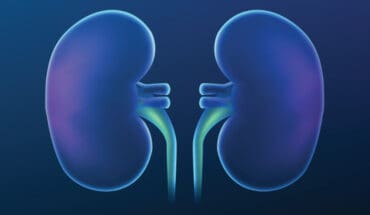Dementia risk differs between sex and gender identity, study suggests: Transgender and non-binary adults may be at higher risk of developing Alzheimer’s disease – the most common form of dementia – in later life, due to key risk factors being more prevalent in this population writes Ben Knight of UNSW.
Research recently published in Alzheimer’s & Dementia: The Journal of the Alzheimer’s Association shows some risk factors for Alzheimer’s disease are disproportionately higher in transgender men, transgender women, and non-binary populations. It is the first global study to investigate differences in dementia risk according to sex and gender identity across the lifespan.
Risk factors are aspects of lifestyle, environment and genetics that increase the likelihood of getting a disease. While risk factors do not necessarily cause disease, they can increase the chances of developing it.
Some risk factors for Alzheimer’s disease, like age, genetics, and family history, cannot be changed. However, others can be modified to help reduce the risk of dementia, such as diet, physical activity, diabetes, blood pressure and depression.
“We’ve made good progress in documenting the experiences of some traditionally marginalised groups based on other characteristics, but we’re yet to do that for transgender and gender diverse people, who have been long overlooked in health research and policy,” says Dr Brooke Brady, lead author of the study and interdisciplinary research fellow at the School of Psychology and Ageing Futures Institute at UNSW Sydney.
“When it comes to dementia and Alzheimer’s disease risk, it appears there are some modifiable risk factors impacting transgender and gender-diverse people that may not have been considered.”
While sex and gender are interrelated and often used interchangeably, they are different concepts. Sex refers to biological status as male, female, or another variation of sex characteristics. Gender is a dynamic social construct that includes psychological, social, and cultural factors around attitudes, behaviours, and stereotypes.
For cisgender individuals, sex and gender identity generally match prevailing norms. For individuals who are transgender or non-binary (sometimes called gender-diverse), their experience of gender may not match the norms associated with their sex assigned at birth.
“It’s vital we’re considering sex differences separately from gender differences because, as the findings of this study illustrate, they may have a different relationship to dementia and Alzheimer’s disease risk across the lifespan,” Dr Brady says.
The study also found that the level of risk changes over the life course, according to sex assigned at birth. While males had higher overall risk in middle-age, this pattern reversed in old age when females reported higher overall risk.
Disparities in modifiable risk factors for dementia based on gender identity
For the study, researchers compared the prevalence of modifiable risk factors in 955 transgender or gender-diverse participants and a sample of age-matched cisgender adults in the 2019 Behavioural Risk Factor Surveillance Survey (BRFSS) – a national health survey of adults living in the United States conducted by the Centres for Disease Control and Prevention.
Using the ANU Alzheimer’s Disease Risk Index – a tool to assist with the self-assessment of risk factors for dementia – the researchers found that transgender men, transgender women, and non-binary adults all had higher overall late-life Alzheimer’s disease risk compared to cisgender men and cisgender women.
A number of significant differences in specific modifiable risk factors may be contributing to this result. The researchers found non-binary adults had the highest rates of depression – (49.8 per cent), significantly higher compared to cisgender men (13.8 per cent), cisgender women (23.6 per cent) and transgender women (30.7 per cent). Transgender men showed the second highest rates of depression (39.8 per cent), significantly higher than both cisgender men and cisgender women.
“If we can address and change those risk factors, we may help to delay or prevent some dementia cases among this underserved and underrepresented group.”
Modifiable risk factors for dementia:
High-blood pressure, Smoking, Diabetes (Type 2), Obesity, Physical inactivity, Alcohol consumption, Cognitive disengagement, Depression, Traumatic brain injury, Hearing loss, Social isolation, Air pollution
They also found significantly higher rates of kidney problems among non-binary adults (8 per cent) compared to cisgender men (0.9 per cent) and cisgender women (1.3 per cent). Kidney disease and dementia share some risk factors, and those diagnosed with kidney disease may have a moderately increased rate of dementia.
Non-binary adults also showed the highest rates of physical inactivity (35.6 per cent) compared to both cisgender men (23.2 per cent) and women (23.9 per cent). Transgender men (5.8 per cent), transgender women (5.6 per cent) and non-binary adults (6.0 per cent) all showed higher rates of heart attacks compared to cisgender women (1.6 per cent). Transgender men (5.8 per cent) and transgender women (5.6 per cent) also showed higher rates of coronary heart disease compared to cisgender women (1.6 per cent).
“These disparities in modifiable risk factors like higher rates of depression and kidney disorders are significant and may drive a higher risk of later-life Alzheimer’s disease for transgender and non-binary adults,” Dr Brady says. “But if we can address and change those risk factors, we may help to delay or prevent some dementia cases among this underserved and underrepresented group.”
Other factors may also have a significant and disproportionate impact on dementia risk for transgender and gender-diverse populations but weren’t measurable from the data. For example, social isolation may be more prevalent among transgender and gender-diverse groups, caused at least in part by social stigma and discrimination.
“Previous research has reported that some transgender and gender-diverse older people experience more limited social support compared to other groups,” Dr Brady says. “Additionally, transgender and gender-diverse older adults often face obstacles in accessing health care and support when they need it. This may be driven in part by historic victimisation experienced by many transgender adults within healthcare systems, and ongoing gaps in understanding among healthcare professionals which are ongoing barriers to care.
“We think tackling social stigma and discrimination could go a long way in normalising transgender and gender-diverse lived experiences and correct some of the health inequalities we see not only in the case of Alzheimer’s disease risk, but for many other aspects of health and wellbeing.”
Dr Brady says research is needed to collect data that includes transgender and gender-diverse people to understand the needs of these underserved populations.
“We would also love to understand how this compares to dementia risk in Australia and other countries, but we need to develop strong local and global datasets,” Dr Brady says. “In doing so, I hope we can dramatically grow the evidence base and dramatically shrink the health disparities impacting trans and non-binary adults in dementia risk.”
- Shake-up of services needed to ease fibromyalgia pain - 9th December 2025
- Continuous glucose monitoring reduces risk of excessive birth weight - 9th December 2025
- Significant mental health benefits of adult-worn slings - 9th December 2025







